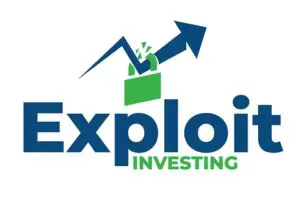
You’d think a big company doesn’t need investors. After all, corporations like Google and Amazon have more than enough profits and cash on hand. Still, investors are crucial to the long-term survival of businesses in general.
Big companies need investors to access capital for operations and marketing. Investors also help by functioning as partial company owners and assuming business risk. This is often better than obtaining capital through loans, as loans bring the risk of bankruptcy and don’t require giving up equity.
To further understand why big companies need investors, I’ll talk about a couple of things.
- I’ll discuss how companies work and where investors fit into that.
- I’ll talk about how value investors find companies worth buying.
What Role Does an Investor Play in a Business?
When you start a business, you assume risks. In most cases, you can’t fund a business entirely by yourself.
Investors provide a source of capital to a business. In exchange, the company makes enough profit to cover its debts and pay dividends to the investors, who own part of the company. Investors may also bring in non-monetary resources like specialized knowledge.
Let’s elaborate further on the points I just mentioned.
Investors Provide a Source of Capital to a Business
In an ideal world, a founder who intends to set up and scale a business doesn’t need capital from third parties. In practice, a founder has to take and share business risks with others.
If you look at a company’s balance sheet, you’ll notice that total assets equal the sum of liabilities and equity (sometimes called “capital”). Assets are the resources that keep the company going, like cash, equipment, inventory, etc.
To obtain assets, the company needs funding from three sources:
- Earnings
- Debtors (whose asset claims are equal to the total liabilities)
- Investors (whose asset claims are equivalent to the equity or capital). Companies obtain loans through financial institutions like banks, while equity or capital comes from investors who buy a company’s shares of stock.
If a company goes bankrupt and needs to liquidate its assets, it’ll first pay off its debts plus interest. Then, the company will pay its investors in order of preference (i.e., preferred shareholders receive payment before common stockholders).
However, investors aren’t always passively waiting for their share of the profits. In some cases, they can spell the difference between life and death for a company.
For example, when Bank of America (BoA) was in crisis in 2011, billionaire Warren Buffett gave BoA $5 billion worth of cash for an equivalent amount of redeemable preferred shares that pay 5 percent per annum in dividends. Buffett made similar deals with companies like Goldman Sachs and General Electric during the 2008 financial crisis.
Investors Own Part of the Company
Earlier, I mentioned that investors inject capital into a company by purchasing shares of stock. As a result, those investors become part owners of the company.
An investor can purchase as many shares of a company as they want. You can buy one stock or a million stocks, depending on the number of outstanding shares the company has available through markets like the New York Stock Exchange.
As an investor, the amount of shares you own is directly related to the risk and return you take. You incur the profit or loss equivalent to the difference between your purchase price and the current market price.
If you own only one stock, your gain or loss is limited to the value of that one stock. If you own 100 percent of a company, you get all the rewards and shoulder all the losses.
You can purchase one of two types of stocks: preferred shares and common shares.
Preferred shareholders receive dividends before common shareholders do. However, preferred shareholders get fixed dividends no matter how much a company earns, whereas common stockholders have a higher earning potential.
In addition to company ownership and dividends, you can enjoy other perks from owning a stock. Examples of stock features that help you maximize your investment are:
Redeemability/Callability
Earlier, I mentioned Warren Buffett purchasing redeemable preferred shares from Bank of America in 2011 for $5 billion. An investor can repurchase redeemable or callable stocks at any time for a specific price and convert them into treasury stocks. Meaning they’re no longer available to trade via secondary markets.
Treasury stocks are boons for a company because they don’t need to pay dividends on those — a handy option to have in times of crisis.
Stock Options
A stock option allows you to purchase a specific number of shares for a fixed price after a three- to five-year vesting period. In theory, the fixed price mitigates any risks from fluctuating stock prices. Whether that price is profitable depends on the investor’s judgment regarding future stock market trends.
For example, if you predict that stock prices will increase from $1 to $100 after six years, and you manage to purchase stock through an option for $2 per share, that’s a substantial profit for you.
Investors Can Provide Non-Monetary Resources
Most investors don’t go beyond purchasing shares of stock and waiting for their dividends to come. A few, however, take on a more active role in the company.
Aside from cash and its equivalents, some investors offer non-monetary resources to companies. They can provide valuable business connections, insights into an organization’s culture and talent pool, etc.
An excellent example of this type of investment is venture capital. Venture capitalists are a dime a dozen in Silicon Valley and have played a significant role in the success of the following:
- Airbnb
- Dropbox
- GitHub
- Spotify
- Uber
- Zoom
- Etc.
I’ve explained why investors are essential even for big companies and their role in business. The following section will explain what value investors look for when buying companies.
What Investors Look for Before Investing
What do value investors look for when buying a company? How does an investor with a long-term mindset choose stocks to purchase?
When buying shares of stock, value investors look for:
- Low price-to-earnings (P/E) ratios
- Low price-to-book (P/B) ratios
- High free cash flows (FCF)
- High margin of safety
Let’s find out more about the above ratios, what they mean for investors, and the limitations you should know if applicable.
Low Price-to-Earnings (P/E) Ratios
To calculate the P/E ratio, you need to know the following:
- Number of outstanding shares
- Per-share market price
- Net income as indicated on the income statement
Then, you follow these steps:
- Divide the company’s net income by the outstanding shares to get the earnings per share (EPS).
- Divide the market price per share by the EPS.
When it comes to the P/E ratio you are paying for earnings in terms of years. Each number equates to the number of years it will take to recoup your investment value. For example a P/E of 5 would take 5 years to recoup your investment.
Generally a lower PE ratio is better but higher PE ratios can make sense if the earnings growth is particularly high. Peter Lynch explains this concept in his book One up on Wall Street available on Amazon.
P/E has limitations, however. For one, you can only use it to compare companies within the same industry. Also, it assumes that future earnings will move in the same direction as present earnings.
Low Price-To-Book (P/B) Ratios
For the P/B ratio, you need the following information:
- Number of outstanding shares
- Per-share market price
- Total assets as shown on the balance sheet
- Total liabilities as shown on the balance sheet
Here are the steps on how to calculate the P/B ratio:
- Subtract total liabilities from total assets. That’s your book value (BV).
- Divide the BV by the outstanding shares. The result is your book value per share (BVPS).
- Divide the per-share market price by the BVPS
The P/B ratio tells you how much the market values the stock relative to its value after paying all liabilities. In other words, it’s a more accurate reflection of a business’ worth than the P/E ratio. A P/B ratio of less than 1.0 is ideal.
High Free Cash Flows (FCF)
Free cash flow (FCF) is the cash available to pay a company’s debtors and investors. It’s equal to the difference between the company’s cash from operations (i.e., cash earned from day-to-day activities) and capital expenditures (i.e., the amount spent on equipment, building, etc.).
Compared to earnings, cash is a more reliable measure of a company’s health. It gives you an idea of a company’s ability to pay immediately should things go sideways. In general, the higher the free cash flow, the healthier a company is.
High Margin of Safety
In a value investing context, the margin of safety is equal to one minus the ratio of the current market price to the intrinsic value of a share.
For example, if the current market price is $100, and the calculated intrinsic value is $200, the margin of safety is 50 percent (1 – (100/200)).
In other words, you’re in a good place as an investor if you pay $100 or less for that stock. To know more about calculating a company’s intrinsic value, I suggest buying the Benjamin Graham The Intelligent Investor (available on Amazon.com). The book has the annotated text to update Graham’s wisdom on today’s market conditions.
Final Thoughts
Big companies need investors because the latter is a relatively low-risk source of capital. Therefore, companies must run their businesses in a way that attracts investors who value long-term results over short-term gains.
